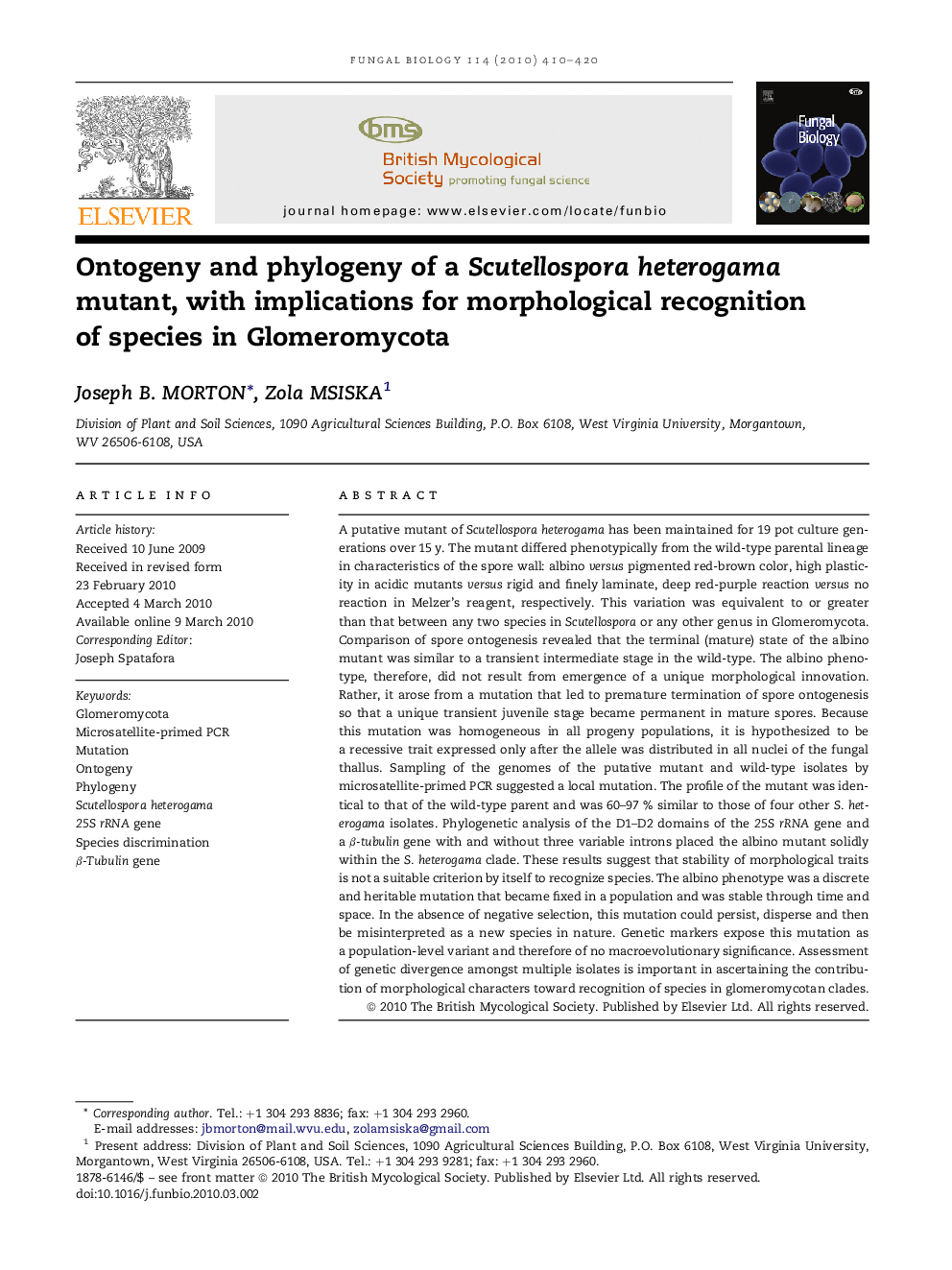| کد مقاله | کد نشریه | سال انتشار | مقاله انگلیسی | نسخه تمام متن |
|---|---|---|---|---|
| 4357278 | 1615848 | 2010 | 11 صفحه PDF | دانلود رایگان |
عنوان انگلیسی مقاله ISI
Ontogeny and phylogeny of a Scutellospora heterogama mutant, with implications for morphological recognition of species in Glomeromycota
دانلود مقاله + سفارش ترجمه
دانلود مقاله ISI انگلیسی
رایگان برای ایرانیان
کلمات کلیدی
موضوعات مرتبط
علوم زیستی و بیوفناوری
علوم کشاورزی و بیولوژیک
علوم کشاورزی و بیولوژیک (عمومی)
پیش نمایش صفحه اول مقاله

چکیده انگلیسی
A putative mutant of Scutellospora heterogama has been maintained for 19 pot culture generations over 15 y. The mutant differed phenotypically from the wild-type parental lineage in characteristics of the spore wall: albino versus pigmented red-brown color, high plasticity in acidic mutants versus rigid and finely laminate, deep red-purple reaction versus no reaction in Melzer's reagent, respectively. This variation was equivalent to or greater than that between any two species in Scutellospora or any other genus in Glomeromycota. Comparison of spore ontogenesis revealed that the terminal (mature) state of the albino mutant was similar to a transient intermediate stage in the wild-type. The albino phenotype, therefore, did not result from emergence of a unique morphological innovation. Rather, it arose from a mutation that led to premature termination of spore ontogenesis so that a unique transient juvenile stage became permanent in mature spores. Because this mutation was homogeneous in all progeny populations, it is hypothesized to be a recessive trait expressed only after the allele was distributed in all nuclei of the fungal thallus. Sampling of the genomes of the putative mutant and wild-type isolates by microsatellite-primed PCR suggested a local mutation. The profile of the mutant was identical to that of the wild-type parent and was 60-97 % similar to those of four other S. heterogama isolates. Phylogenetic analysis of the D1-D2 domains of the 25S rRNA gene and a β-tubulin gene with and without three variable introns placed the albino mutant solidly within the S. heterogama clade. These results suggest that stability of morphological traits is not a suitable criterion by itself to recognize species. The albino phenotype was a discrete and heritable mutation that became fixed in a population and was stable through time and space. In the absence of negative selection, this mutation could persist, disperse and then be misinterpreted as a new species in nature. Genetic markers expose this mutation as a population-level variant and therefore of no macroevolutionary significance. Assessment of genetic divergence amongst multiple isolates is important in ascertaining the contribution of morphological characters toward recognition of species in glomeromycotan clades.
ناشر
Database: Elsevier - ScienceDirect (ساینس دایرکت)
Journal: Fungal Biology - Volume 114, Issues 5â6, MayâJune 2010, Pages 410-420
Journal: Fungal Biology - Volume 114, Issues 5â6, MayâJune 2010, Pages 410-420
نویسندگان
Joseph B. Morton, Zola Msiska,